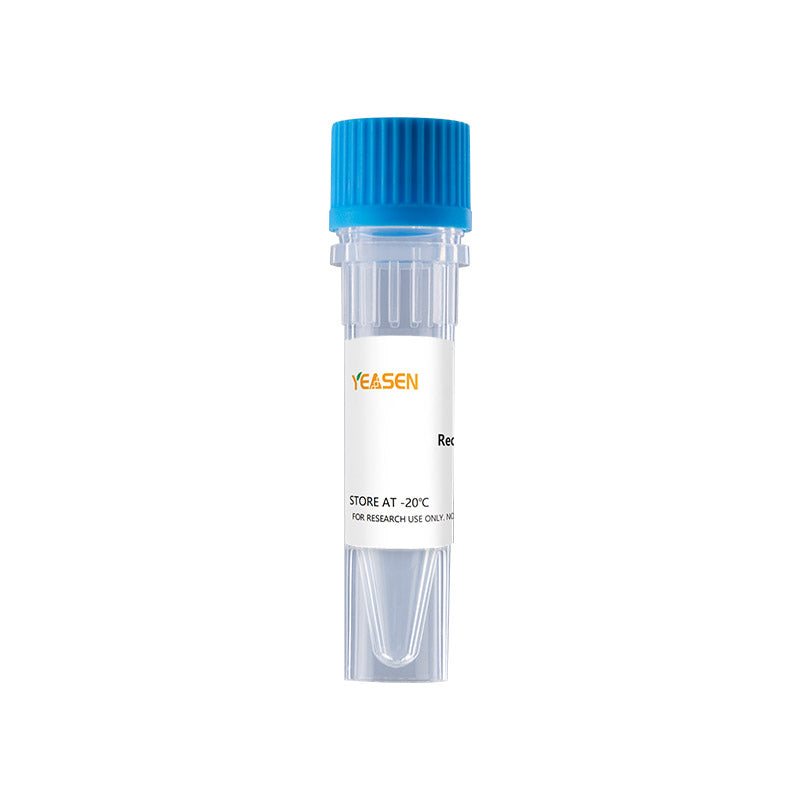Description
IL-36 gamma [previously called IL-1F9, IL-1 epsilon (epsilon), and IL-1H1] is a member of the IL-1 family which includes IL-1 beta, IL-1 alpha, IL-1ra, IL-18, IL-36 Ra (IL-1F5), IL-36 alpha (IL-1F6), IL-36 beta (IL-1F8), IL-37 (IL-1F7) and IL-1F10. All family members show a 12 beta-strand, beta-trefoil configuration, and are believed to have arisen from a common ancestral gene. Mouse IL-36 gamma is an 18-22 kDa, 164 amino acid (aa) intracellular and secreted protein that contains no signal sequence, no prosegment and no potential N-linked glycosylation sites. Mouse IL-36 gamma (aa 13-164) shares 58%, 84%, 64% and 60% aa sequence identity with human, rat, equine and bovine IL-36 gamma, respectively, and 23-57% aa sequence identity with other family members. A 193 aa mouse isoform with a 29 aa N-terminal extension has been reported. Highest levels of IL-36 gamma are produced by Langerhans cells, keratinocytes, and stomach Chief cells and parietal cells; these cells contribute to first-line defense against pathogens in the skin, lungs and digestive tract. Its expression is induced by LPS treatment of monocytes, and by IL-alpha / beta, IL-17 or TNF-alpha treatment of keratinocytes and bronchial epithelia. Skin IL-36 gamma expression is increased in contact hypersensitivity and psoriasis. It is elevated in inflammatory disorders of the lung (such as asthma) and viral infections. Lung IL-36 gamma and other IL-36 proteins contribute to neutrophil influx. The receptor for IL-36 gamma is a combination of IL-1 Rrp2, mainly found in epithelia and keratinocytes, and the widely expressed IL-1 RAcP. IL-36 alpha, beta and gamma all activate NF-kappa B and MAPK pathways in an IL-1 Rrp2 dependent manner, and IL-36 gamma induces production of inflammatory cytokines and chemokines such as CXCL8/IL-8. Full-length recombinant IL-36 proteins appear less active than their endogenous counterparts, but trimming of the N-termini enhances their activity.
Product Properties
|
Synonyms |
IL1F9; IL-1F9; IL1H1; IL-1H1 |
|
Accession |
Q8R460 |
|
GeneID |
Mm.249379. |
|
Source |
E.coli-derived Mouse IL-36γ, 152aa, Gly13-Ser164. |
|
Molecular Weight |
Approximately 17.3 kDa. |
|
AA Sequence |
GRETPDFGEV FDLDQQVWIF RNQALVTVPR SHRVTPVSVT ILPCKYPESL EQDKGIAIYL GIQNPDKCLF CKEVNGHPTL LLKEEKILDL YHHPEPMKPF LFYHTRTGGT STFESVAFPG HYIASSKTGN PIFLTSKKGE YYNINFNLDI KS |
|
Tag |
None |
|
Physical Appearance |
Sterile Filtered White lyophilized (freeze-dried) powder. |
|
Purity |
> 97% by SDS-PAGE and HPLC analyses. |
|
Biological Activity |
The ED50 as determined by inducing IL-6 secretion in murine NIH/3T3 cells is less than 10 ng/mL, corresponding to a specific activity of > 1.0 × 105 IU/mg. Fully biologically active when compared to standard. |
|
Endotoxin |
< 0.1 EU per 1μg of the protein by the LAL method. |
|
Formulation |
Lyophilized from a 0.2 µm filtered solution in 1 M MOPS, 10 mM NaAC, pH7.6, with 2 mM EDTA, 5% Trehalose, 0.02 % Tween-20. |
|
Reconstitution |
We recommend that this vial be briefly centrifuged prior to opening to bring the contents to the bottom. Reconstitute in sterile distilled water or aqueous buffer containing 0.1% BSA to a concentration of 0.1-1.0 mg/mL. Stock solutions should be apportioned into working aliquots and stored at ≤ -20°C. Further dilutions should be made in appropriate buffered solutions. |
Shipping and Storage
The products are shipped with ice pack and can be stored at -20℃ to -80℃ for 1 year.
Recommend to aliquot the protein into smaller quantities when first used and avoid repeated freeze-thaw cycles.
Cautions
1. Avoid repeated freeze-thaw cycles.
2. For your safety and health, please wear lab coats and disposable gloves for operation.
3. For research use only!
Payment & Security
Your payment information is processed securely. We do not store credit card details nor have access to your credit card information.
Inquiry
You may also like
FAQ
The product is for research purposes only and is not intended for therapeutic or diagnostic use in humans or animals. Products and content are protected by patents, trademarks, and copyrights owned by Yeasen Biotechnology. Trademark symbols indicate the country of origin, not necessarily registration in all regions.
Certain applications may require additional third-party intellectual property rights.
Yeasen is dedicated to ethical science, believing our research should address critical questions while ensuring safety and ethical standards.

